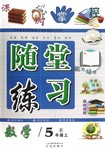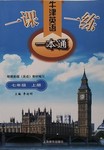题目内容
The world today _____ different without the amazing discoveries produced by great scientists.
A.were B.had been C.would be D.would have been
练习册系列答案
 开心蛙状元作业系列答案
开心蛙状元作业系列答案 课时掌控随堂练习系列答案
课时掌控随堂练习系列答案 一课一练一本通系列答案
一课一练一本通系列答案
相关题目
题目内容
The world today _____ different without the amazing discoveries produced by great scientists.
A.were B.had been C.would be D.would have been
 开心蛙状元作业系列答案
开心蛙状元作业系列答案 课时掌控随堂练习系列答案
课时掌控随堂练习系列答案 一课一练一本通系列答案
一课一练一本通系列答案